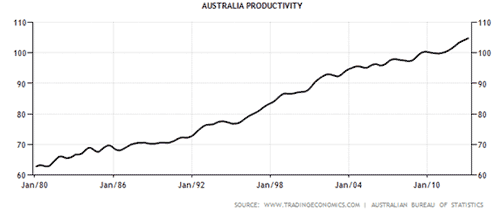Correction
Crikey writes: Re. “On joyless FM, the joke is on all of us” (Friday). Crikey misstated that 2Day FM DJs Michael Christian and Mel Greig had a breakfast radio show. In fact, they hosted the Hot30, a night-time program.
The real story about The Iconic
Adam Jacobs writes: Re. “An Iconic loss: $45m down, online retailer spirals out of control” (Friday). I guess at least there was a disclosure at the end of Adam Schwab’s story about our company that revealed he has a commercial interest in a number of online retailers, including Cudo and Deals.com. Unfortunately, this is a story riddled with errors and massive disconnects in logic. From misrepresentations, deliberate or otherwise, of our financial position to countless allegations, implied and direct, about our investors, our strategy, our status, and our motivations, this surely is not worthy of Crikey. The facts are these:
- The Iconic is Australia’s #1 fashion website with over 4 million visits (or over 3 million unique visitors) per month, please see the chart below:
- Typically online e-commerce retailers take several years to reach profitability. We are tracking against an accelerated timeframe and are confident that we will continue to meet our internal milestones and targets, just as we have done to date.
- We have been highly successful in attracting investor support. The additional $28 million in planned financing led by new investor Verlinvest, in addition to the $50 million-plus raised previously, completes the largest-ever investment into an Australian e-commerce venture. Other existing investors include J.P.Morgan and global e-commerce incubator Rocket Internet.
- Those investments were made with full access to our financials and our strategy and were completed following many months of due diligence. Those investments represent a compelling vote of confidence in our vision and strategy.
Sydney Institute ‘has diverse views’
Gerard Henderson, Sydney Institute executive director, writes: Re. “Censorship? Climate sceptics culled from universities” (Friday). Cathy Alexander’s assertion that the Sydney Institute is part of “Australia’s climate sceptic movement” is false. This is evident from an examination of the Institute’s program, which is on our website. The Institute is a forum for debate and discussion — it does not advocate policies and is not part of any movement.
It is true that Professor Murry Salby addressed the Sydney Institute twice on climate. It is also a fact that the likes of Professor Andy Pitman, Professor Tim Flannery and Ian Dunlop have spoken at the Institute on environmental issues. Unlike many taxpayer-subsidised universities, The Sydney Institute hosts diverse views and publishes diverse opinions.
On the climate change debate, the Institute has a policy of only inviting speakers on the topic who have qualifications in science and/or engineering. It is a fact that many high-profile commentators on what used to be called global warming have no qualifications in science or engineering. This includes such leading eco-catastrophists as Clive Hamilton and Robert Manne.
Productivity is better than you think
John Foster writes: Re. “Rudd’s day of national reconciliation masks a real productivity challenge” (Friday). There is much discussion in the media about Australia’s “productivity crisis” which is often seen as beginning as long ago as 2002. But the chart below, which is up to first quarter 2013, shows that Australia’s labour productivity has grown roughly linearly with some slight long-term waving for the past 30 years and is still growing.

So where is the crisis? Well, it comes from estimates of “multi-factor productivity”, which are bandied around by business commentators who have little understanding of where they come from. Such estimates, in fact, come from a highly contentious statistical exercise, peppered with unrealistic assumptions, undertaken by the Productivity Commission. The reality is that Australia has healthy productivity growth and is likely to continue to do so in the decade to come, particularly given the significant amount of capital investment that has been undertaken (the PC seems to think that this is bad news because it has continually lowered its measure of “capital productivity” over the past decade!). This is not to say that a national debate on productivity or, more importantly, the innovation processes that ultimately drive it, is not necessary. What must be stressed is that we are starting from a position of strength, not weakness.
Praising the Fed? Not so fast
Daniel Jeffares writes: Re. “Bernanke’s caution and patience saving the US economy” (Friday). I note your upbeat “Well done, Mr Bernanke” piece. While the “group think” of your mainstream competitors is understandable, it would be refreshing if Crikey could take 10minutes to understand the dynamics of money printing. This 10-minute video presents a radically different interpretation of the relationship between “growth” and debt, which will better inform your finance writers. The full thesis is presented by Richard Duncan in this one-hour lecture. It would be wonderful if someone was prepared to reconsider the conventional “wisdom”.







Crikey is committed to hosting lively discussions. Help us keep the conversation useful, interesting and welcoming. We aim to publish comments quickly in the interest of promoting robust conversation, but we’re a small team and we deploy filters to protect against legal risk. Occasionally your comment may be held up while we review, but we’re working as fast as we can to keep the conversation rolling.
The Crikey comment section is members-only content. Please subscribe to leave a comment.
The Crikey comment section is members-only content. Please login to leave a comment.